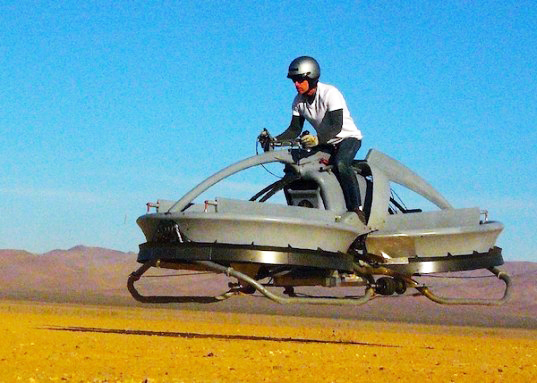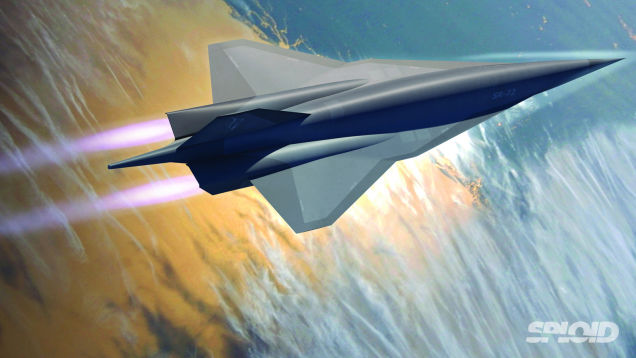You may love your new car’s heated seats and built-in ice dispenser, but there’s always room for improvement. Whether it’s alternative fuels, easier control or just general better design, the following new and improved vehicles might hit the market in the near future.
10. Air Powered Car
With the world’s supply of petroleum running low, alternatives for fuel are hitting the market. Hybrids that run using batteries and plug-ins are getting popular, but prices can reach hundreds of thousands of dollars.
That’s one of the reasons Peugeot developed a new and cheaper hybrid car that can run using petroleum and compressed air. The car will automatically use air when driving under 69 kph (43mph) and can use either (or both) air and petroleum at faster speeds. Using compressed air instead of batteries is a greener way of producing energy since there are fewer toxic materials released. It also allows more power to be released at once for quicker acceleration. Unfortunately, a car won’t run on air alone since energy will still be needed when compressing it. Add to that the dangers of using compressed air and this is still a work in progress.
9. A Better Military Vehicle
Researchers are always trying to strengthen military vehicles. In August 2014, DARPA announced its aim of not only making their vehicles tougher, but reducing their size and weight and boosting their speed as well.
The program, known as Ground X-Vehicle Technology (GXV-T), wants to move away from the traditional vehicles that are large and can easily be spotted by enemies. The GVX-T will introduce new concepts such as a sensor that will help track allied and opposing forces. It will also be faster, need fewer people to operate it and will feature an autopilot system in case the operator is busy with other tasks.
8. Personal Choppers
We’re constantly wasting horsepower driving at such slow speeds because of the ever growing problem of ground traffic. So forget about saving for an expensive fancy car that will be just as stuck as you are now, and hold out for the day when you can have your very own helicopter.
A European Union project called MyCopter aims to create a one-seater personal helicopter that can be controlled as easily as your car. It will fly low enough to not interfere with air traffic but high enough to not bother ground traffic, and all without the need for a pilot license. And forget about circling around roads and getting lost by taking the wrong off-ramp when you can just fly your way straight directly between two places. The initial phase of the project is almost complete, so hopefully we’re not far off from getting our own choppers.
7. Self-Driving Car
Because most road accidents are caused by human errors — texting, drunk driving, just plain bad reflexes — we can’t help but feel that some people simply weren’t meant to drive. That’s why we think Google’s doing the right thing by presenting a car that can drive on its own.
The car doesn’t need the passenger to do anything at all besides start it and input the target destination. It doesn’t even have a steering wheels or pedals, just an emergency break. The car can detect its surroundings through a radar on top that has a range of 180 meters. It also has a camera and laser sensor for a better scan of its surroundings. It’s excellent at avoiding accidents, although the current model only has a maximum speed of 40 kph (25 mph). Aside from the obvious benefits to people with disabilities, the car also gives passengers extra time to relax, work or eat breakfast instead of being stressed out by their morning commute.
6. Mind-Controlled Aircraft
Not too fascinated with the self-driving car? Want to do more than just press the start button? Do you still want to have control over a vehicle, but are feeling too lazy to move your limbs? How about using only your mind to control an aircraft?
A European Union-funded project known as BrainFlight allows an easier way of controlling an aircraft by simply thinking of commands like left or right. The project’s test pilots wore a cap fitted with EEG electrodes that processes the brain’s electrical signals, which are in turn processed by a computer using algorithms. Each algorithm processed corresponds to a command to control the aircraft. EEG has been useful in allowing people to do simple tasks without lifting a muscle, and researchers simply took it to a whole new level.
5. Hoverbike
Hoverbikes are something you see a lot in science fiction. Although this one doesn’t exactly look like the bike used by the stormtroopers in Star Wars, it basically works the same way. And good news — you won’t need a pilot license to fly this baby.
Aerofex plans to release the hoverbike in 2017 with flight tests starting in 2016. It’s going to weigh only 356 kgs (785 lbs), can carry up to two people at a maximum combined weight of 140 kgs and can reach speeds of up to 72 kph (45 mph). Although that sounds slow, the real issue is to create a hoverbike that’s safe to use considering it can reach altitudes of up to 3.7m (12 ft). Hoverbikes do have their purpose aside from being cool ride — they can be used for search and rescue operations to easily reach places not accessible by more traditional vehicles.
4. Very Fast Levitating Train
Trains that levitate off the tracks have been around for a while, with the earliest high-speed commercial train able to reach speeds of more than 400 kph (250 mph). But imagine a train that can reach up to 2900 kph (1800 mph). That’s about three times the speed of an average commercial plane, and could get you from New York to Los Angeles in just under 90 minutes! A new development in China called the Super Maglev could potentially reach such speeds.
Magnetic Levitation Trains, or MagLev for short, uses magnets to move instead of traditional wheels. This eliminates the friction between the wheels and the tracks, thus allowing faster speeds. But as speed increases so does air resistance, and therefore more power is needed. That’s why the current fastest passenger MagLev train can only reach speeds of 431 kph (268 mph). The Super Maglev will use a tube to reduce these pressures and allow for much higher speeds, although at this point it’s all largely theoretical so don’t book those train tickets yet.
3. Super Submarine
It seems China wants to turn every single vehicle into super fast ones that try to fight the laws of physics. China also has plans to create a supersonic submarine fast enough to complete a trans-Pacific journey in about 100 minutes.
Submarines are currently the turtles among sea vessels, with the fastest one just reaching 80 kph. Researchers are planning to use a process called “supercavitation,” which involves enveloping a submersible inside a bubble to reduce underwater drag that reduces speed. This is also the process used in Russian torpedoes that can reach 386 kph (230 mph). A supercavitating submersible could theoretically reach speeds of up to 5800 kph (3600 mph), which is the same as the speed of sound underwater. There are still a lot of problems to work out, as a very powerful rocket engine will be needed to give the submarine a long range. Plus, high speeds will make it difficult to maintain the drag-reducing bubble.
2. SR-72
The SR-71 Blackbird was an aircraft that could reach Mach 3 speeds. It served mostly as a spy plane for the United States Air Force from 1964 until it was retired in 1998. It still holds the record as the fastest manned jet plane, but that might be broken soon.
Lockheed Martin, the creator of the Blackbird, has started a project to create its successor. The new jet will be just about the same size of its predecessor but will be capable of reaching Mach 6 speeds, a speed that only the X-15 was able to reach on a regular basis. Like the SR-71, it will mainly be used for surveillance. The SR-72 is expected to start flying by 2018 and become fully operational in 2030.
1. Batmobile
Okay, it’s not exactly Batman’s amazing car, but this is the closest we could possibly have in the next couple of years. The GF7 jet car has an astonishing 3500 pound engine and can reach up to 160 kph (100 mph) on the ground. It can then open its seven meter (23 ft) folding wings and fly up to an altitude of 12,000 meters (39,300 ft) with speeds of up to 885 kph (550 mph). When on the ground, the car will be powered by electric motors which are then recharged by the jet engine during flight mode. Like conventional aircraft, it will need a long runway of about 2500 meters to reach the right speed for takeoff. But a great car comes with a great price tag — the GF7 will cost three to five million dollars and is expected to be available in about four years.









